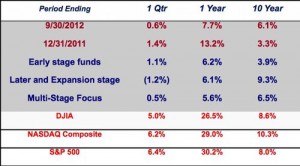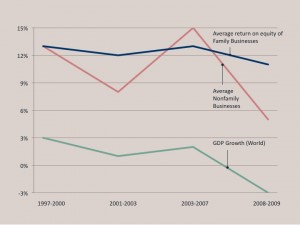Warren Buffett is famous for his discipline in his early investing success. Now, I think he is demonstrating his flexibility (some are critical of his recent flexibility) in investment philosophy. Both are important skills for business owners and managers to master and to know when to utilize each approach. A balance is required to be disciplined but not too rigid and flexible but not changing too much. When someone tells you that there is one best way of always doing something, run away. I have been thinking about this with the Berkshire Hathaway annual meeting this Saturday and the evolution in philosophy by Buffett over recent years. I will be at the Berkshire meeting, so please let me know if you will also be there.
Here are some examples of how Buffett’s discipline evolved to greater flexibility over time. Many of these changes are probably logical given the increased size of Berkshire and the reality of finding attractive places to allocate large amounts of capital, but they are interesting because of the scope of these shifts in philosophy.
Warren Buffett Investment Philosophy Changes:
- Not willing to use stock for acquisition, then used it in the acquisition of Burlington Northern. For years, Buffett said that he did not want to utilize Berkshire stock for acquisitions “unless we receive more in value than what we give” which was never going to happen given his belief in the earning power of Berkshire. Then, he bought Burlington Northern paying 40% of the purchase price in Berkshire stock and even paying a full price for Burlington Northern at a time when Berkshire stock was not overvalued and probably a little undervalued. This made the dilution even more expensive for Berkshire making it even more out of character for Buffett. In his annual letter for 2012, he estimated the dilution as 6.1% which is about $16 billion worth of value today up from approximately $10 billion in value via equity at the time of the deal, or about an 18% annual increase in the value of that stock that could have been kept for shareholders. He also broke tradition and split the Class B shares 50-to-1 making it easier for retail investors even though he had liked the stock being expensive to discourage short-term investors which added 65,000 shareholders to the company. I have not analyzed the available information to determine whether this decision worked, but Buffett seems to think it has given his comments in recent letters. I still sense that it may be painful for him to have given up so much dilution for this acquisition.
- Disdain of private equity playbook, then using that playbook in the acquisition of Heinz. For years, Buffett trumpeted his low or nonexistent use of debt in acquisitions or no changes to the operating styles of the acquired businesses. With the Heinz acquisition, he again reversed his beliefs and is using the private equity playbook of utilizing debt and relying on the cost-cutting mastery of 3G Capital to create value in the acquisition. And, he paid a full price for the business and certainly much more than he would have paid for a business earlier in his career.
- Preference changing from businesses generating capital to businesses utilizing capital. Buffett has said that “the best businesses by far for owners continue to be those that have high returns on capital and that require little incremental investment to grow” (and, it is rare, but would love a business if it could use a lot of capital at very high returns). Many Berkshire businesses are great at generating capital and do not have good places to put that capital — Buffett loved acquiring those businesses because he could take the capital and allocate it himself to other businesses or projects. Given the huge cash balances and need to put capital to work, Buffett has shifted his focus to businesses that can put large amounts of capital to work at a reasonable (certainly not great) returns on capital, such as the regulated utility business of MidAmerican or the Burlington Northern railroad. In the 2009 report, he wrote, “In earlier days, Charlie and I shunned capital-intensive businesses such as public utilities.” Today, he is satisfied earning 10% returns through businesses that can soak up huge amounts of capital each year, for at least a portion of his portfolio. I suppose earning 10% is better than earning zero. This seems to be a logical evolution, but also one that not many people would have been able to execute a shift in strategy.
- Loving newspapers to saying he will “never invest in newspapers again” to acquiring more newspapers. Buffett loved newspapers in the 1970’s through the 1990’s. He then said on a Charlie Rose interview when the Wall Street Journal was being sold that he would never invest in newspapers again and that “the circulation, advertising and profits of the newspaper industry overall are certain to decline.” Now, he is buying newspapers such as the Omaha World-Herald and Media General. He even said that he is rich enough that he can afford “sentimental” purchases like this. This is all very out of character for him that would have refused to even consider a sentimental investment early in his career. Given that these purchases are so small that they won’t impact the results of Berkshire, it makes me wonder why he is doing it other than the purchase prices may be so cheap that he cannot help himself.
- Well documented evolution from cigar-butt value investing to broader definition of “value”. Many people have written about how Buffett began his career buying $1 of value for 50 cents, often by just looking at a company’s balance sheet and not really the underlying nature and strength of a business. That shifted to being willing to pay more for businesses with long-term competitive advantages. While well examined previously, this shifts needs to be on the list because it was such a drastic shift in philosophy for him that many people would not have been able to make, particularly when they had such great success with the earlier model.
A great modern day investor is a contradiction of shifting philosophies and evolving beliefs. My take from this is that a balance of discipline and flexibility, and when to utilize each, is an important skill to learn. There is no one right strategy.
Related articles
- Investment Strategy and Structure is the #1 Thing Founders and CEO’s Should Watch in Raising Capital [masonmyers, March 24, 2013]
- Family Business Role Models: Blumkin Family of Berkshire Hathaway [masonmyers.com, March 4, 2013]
- Thoughts on the Berkshire Hathaway Meeting 2012 [masonmyers.com, May 6, 2012]
- Invest With Buffett, Like Buffett, or Both? (news.morningstar.com)












 I am an investor at Greybull Stewardship, an
I am an investor at Greybull Stewardship, an 
 Sign Up
Sign Up RSS Feed
RSS Feed